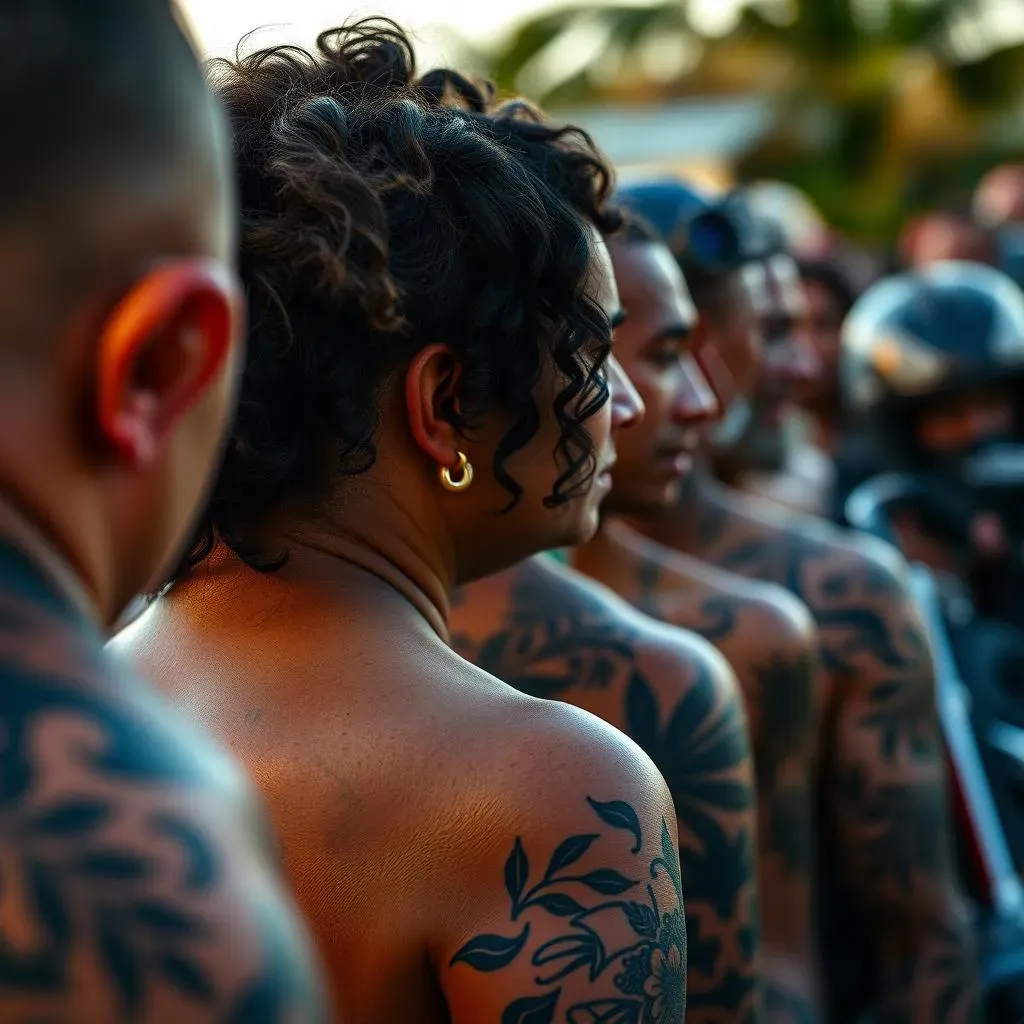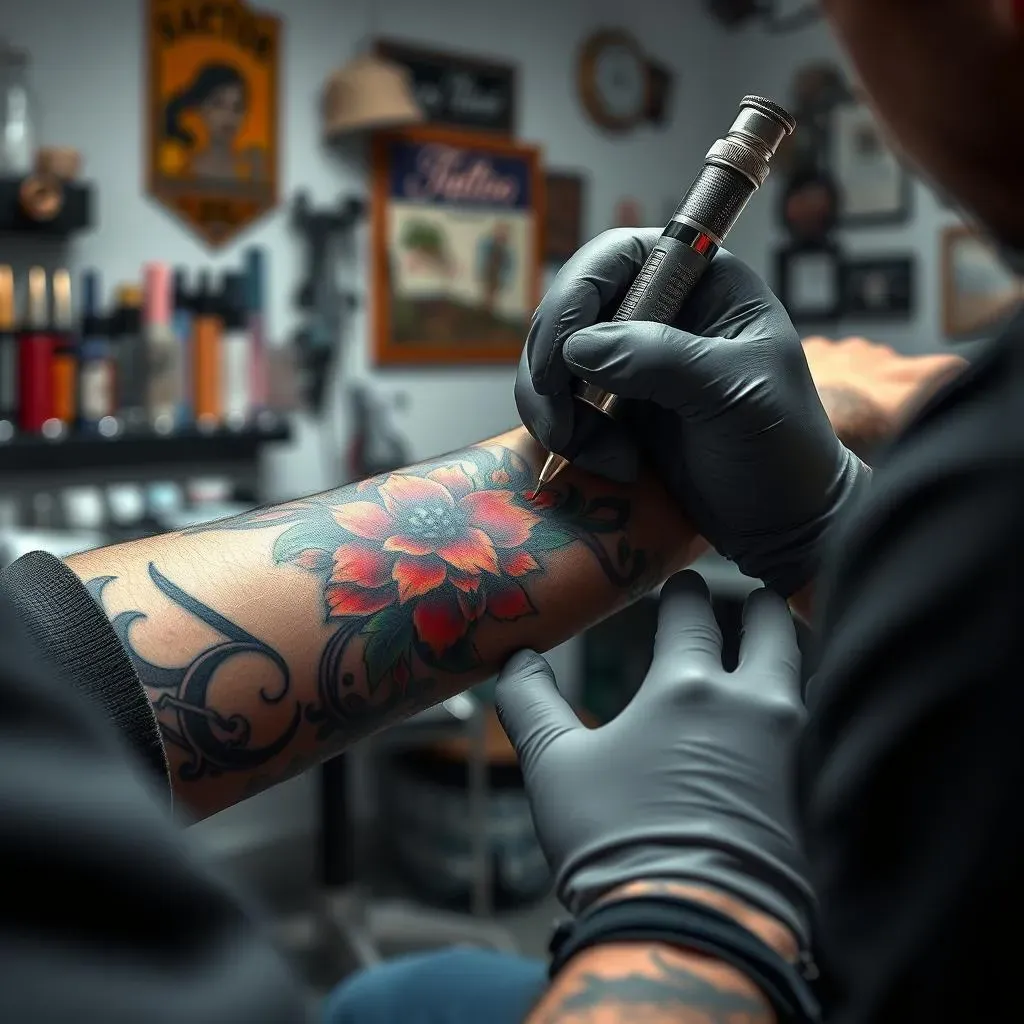Table of Contents
Why tattoos are art? It's a question that dives deep into history, culture, and the very definition of art itself. For centuries, tattoos have adorned human skin, evolving from simple tribal markings to intricate masterpieces. This isn't just about needles and ink; it's about storytelling, personal expression, and pushing the boundaries of creativity. Think of Ötzi the Iceman, his ancient tattoos hinting at rituals and beliefs long forgotten, or consider the modern collector, curating a gallery of ink across their body. In this exploration, we'll journey through the historical context of tattoos, examine their role as personal and cultural statements, trace the evolution of tattooing techniques, and ultimately, make a case for why tattoos deserve recognition as a legitimate and powerful art form. Get ready to see skin in a whole new light.
The Historical Roots of Tattoo Art
The Historical Roots of Tattoo Art
Let's kick this off by digging into the past, because the historical roots of tattoo art are way deeper than you might think. We're talking thousands of years, people! Forget the trendy tattoo parlors of today; ancient civilizations were rocking ink long before electricity was even a thing. Think about it: Ötzi the Iceman, discovered frozen in the Alps, had tattoos dating back to 3200 BC. These weren't just random doodles; they likely served a purpose, maybe medicinal or spiritual. And it wasn't just a one-off thing. Cultures all over the globe – Egyptians, Polynesians, Japanese, you name it – were using tattoos for everything from marking status to telling stories.
Tattoos as Personal and Cultural Statements
Tattoos as Personal and Cultural Statements
Ink as Identity: Personal Narratives
so tattoos aren't just about looking cool (although they definitely can be!). What's super fascinating is how they act as personal billboards. People get inked with symbols, images, and words that represent their beliefs, experiences, and passions. Think about it: a musician might get a treble clef, a traveler might sport a world map, or a survivor might choose a symbol of resilience. These aren't just random choices; they're visual representations of who someone is and what they stand for. It's like wearing your heart on your sleeve, only it's permanently etched into your skin.
And it's not just about individual expression. Tattoos can also mark significant life events – a tribute to a loved one, a reminder of a personal triumph, or a symbol of overcoming adversity. They become tangible reminders of our journeys, our struggles, and our victories. Each tattoo tells a story, and when you see someone covered in ink, you're essentially looking at a living, breathing autobiography.
Cultural Canvas: Shared Meanings
Now, let's zoom out a bit and look at the bigger picture. Tattoos often play a huge role in cultural identity. For some communities, they're ancient traditions passed down through generations. Think of the Polynesian cultures, where intricate patterns tell stories of ancestry, status, and achievements. These aren't just pretty designs; they're integral parts of their heritage.
Even within smaller groups, tattoos can create a sense of belonging and shared identity. A motorcycle club might sport matching tattoos, or a group of friends might get inked to commemorate a special bond. It's a way of saying, "I'm part of this tribe," and visually declaring your allegiance. Tattoos become a powerful symbol of unity and connection.
The Evolving Dialogue: Challenging Norms
Of course, the meaning of tattoos isn't static. As society evolves, so does the way we perceive and use ink. Tattoos can be a form of rebellion, a way of challenging societal norms and expectations. Think about the early days of tattooing, when it was often associated with sailors and outcasts. Getting inked was a way of signaling that you didn't quite fit into mainstream society.
Today, while tattoos are becoming more mainstream, they can still be a powerful statement. People use them to express their individuality, to challenge beauty standards, and to reclaim their bodies. They're saying, "This is my skin, and I'll decorate it how I damn well please." And that, in itself, is a pretty powerful message. It's a constant dialogue between the individual, their skin, and the world around them.
The Evolution of Tattooing Techniques and Artistry
The Evolution of Tattooing Techniques and Artistry
Alright, so now that we've established that tattoos have been around for ages and carry some serious cultural weight, let's talk about how the actual process of tattooing has changed over time. Because trust me, it's not like they were using fancy tattoo guns and sterile needles back in the day. The evolution of tattooing techniques and artistry is a fascinating journey in itself!
In the beginning, things were pretty basic. We're talking sharpened bones, thorns, and even rocks used to puncture the skin and introduce pigment. Imagine the patience and skill that took! The materials varied depending on what was available locally, but the principle was the same: create a wound and pack it with color. It was a slow, painful process, but the results were often incredibly meaningful and long-lasting.
Technique | Tools | Region/Culture |
|---|---|---|
Hand-Tapping | Tapping stick and comb-like tool with needles | Polynesia, Japan (Tebori) |
Hand-Poked | Single needle and ink | Various (ancient and modern) |
Machine Tattooing | Tattoo machine with adjustable needles | Modern (worldwide) |
Fast forward a few centuries, and we start seeing more sophisticated tools and techniques emerge. Cultures like Japan developed intricate hand-tapping methods, using specialized tools and pigments to create stunningly detailed designs. These weren't just tattoos; they were works of art, requiring years of training and a deep understanding of the human body.
Then, in the late 19th century, along came the electric tattoo machine, invented by Samuel O'Reilly. This was a game-changer! Suddenly, tattooing became faster, more precise, and more accessible. Artists could create more complex designs with greater ease, and the industry exploded. Of course, with new technology comes new challenges, like sterilization and safety, but the electric tattoo machine paved the way for the modern tattooing we know and love.
Why Tattoos Are Art: Skills, Design, and the Living Canvas
Why Tattoos Are Art: Skills, Design, and the Living Canvas
So, let's get down to brass tacks: Why tattoos are art? It's more than just poking ink into skin; it's a fusion of skill, design, and the unique challenge of working on a living, breathing canvas. A good tattoo requires a solid understanding of art principles – composition, color theory, perspective – all that jazz. You can't just slap any old image on someone and call it art. There's a real craft involved in creating a design that flows with the body's contours, that will look good now and years down the line.
Think about it: A painter has a static canvas, but a tattoo artist has to consider how the design will move, stretch, and age with the person's body. That requires a whole different level of expertise. Plus, they're working with a medium that's constantly changing, reacting, and sometimes rejecting the ink. It's a collaboration between the artist and the canvas, a dance between intention and reality.
And let's not forget the technical skill involved. Tattooing isn't just about tracing a stencil; it's about understanding how the needles work, how the ink behaves, and how to create different effects with varying techniques. Shading, linework, color packing – these are all skills that take years to master. A truly great tattoo artist is a master of their craft, constantly pushing the boundaries of what's possible with ink and skin.
- Design Principles: Composition, balance, color theory
- Technical Skills: Linework, shading, color packing
- Anatomical Knowledge: Understanding muscle structure and skin elasticity
So, next time you see a stunning tattoo, remember it's not just a pretty picture. It's the result of countless hours of practice, a deep understanding of art principles, and the unique ability to transform skin into a living, breathing work of art.
The Enduring Canvas: Why Tattoos Triumph as Art
So, why tattoos are art? Because they embody a potent mix of individual self-expression, cultural significance, artistic vision, and technical skill. From ancient symbols etched onto skin to modern masterpieces blooming across the body, tattoos tell stories, preserve histories, and celebrate the human experience. They transform the body into a living, breathing canvas, challenging perceptions and blurring the lines between art and life. As tattooing continues to evolve, pushing boundaries and embracing new techniques, its place in the art world is only set to solidify. The ink speaks for itself.